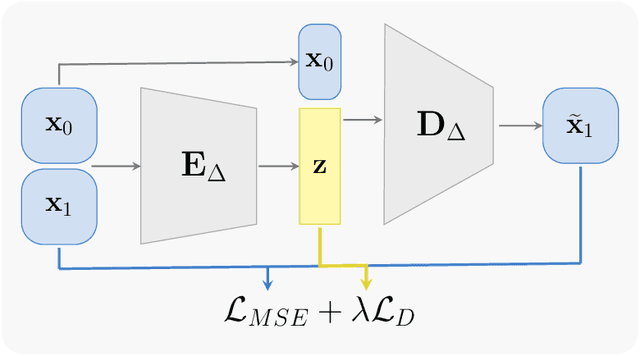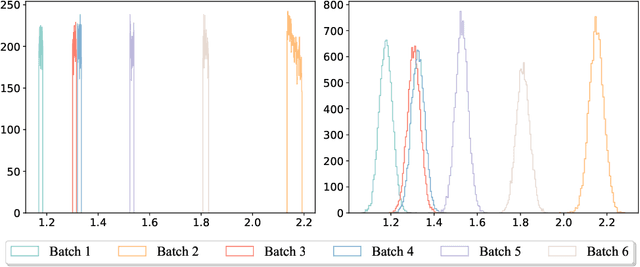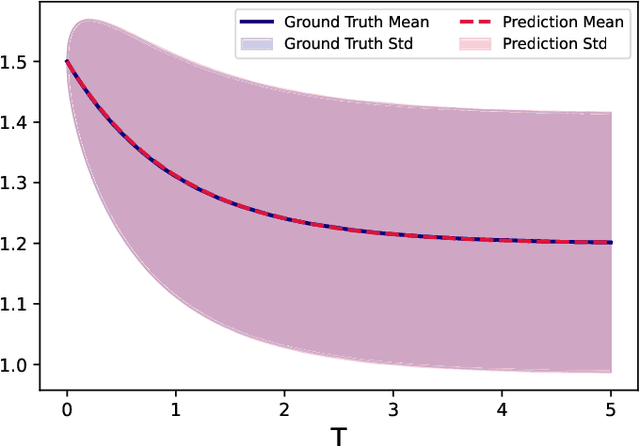Zhongshu Xu
Chebyshev Feature Neural Network for Accurate Function Approximation
Sep 27, 2024



Abstract:We present a new Deep Neural Network (DNN) architecture capable of approximating functions up to machine accuracy. Termed Chebyshev Feature Neural Network (CFNN), the new structure employs Chebyshev functions with learnable frequencies as the first hidden layer, followed by the standard fully connected hidden layers. The learnable frequencies of the Chebyshev layer are initialized with exponential distributions to cover a wide range of frequencies. Combined with a multi-stage training strategy, we demonstrate that this CFNN structure can achieve machine accuracy during training. A comprehensive set of numerical examples for dimensions up to $20$ are provided to demonstrate the effectiveness and scalability of the method.
Modeling Unknown Stochastic Dynamical System via Autoencoder
Dec 15, 2023



Abstract:We present a numerical method to learn an accurate predictive model for an unknown stochastic dynamical system from its trajectory data. The method seeks to approximate the unknown flow map of the underlying system. It employs the idea of autoencoder to identify the unobserved latent random variables. In our approach, we design an encoding function to discover the latent variables, which are modeled as unit Gaussian, and a decoding function to reconstruct the future states of the system. Both the encoder and decoder are expressed as deep neural networks (DNNs). Once the DNNs are trained by the trajectory data, the decoder serves as a predictive model for the unknown stochastic system. Through an extensive set of numerical examples, we demonstrate that the method is able to produce long-term system predictions by using short bursts of trajectory data. It is also applicable to systems driven by non-Gaussian noises.
Butterfly-Net2: Simplified Butterfly-Net and Fourier Transform Initialization
Dec 09, 2019



Abstract:Structured CNN designed using the prior information of problems potentially improves efficiency over conventional CNNs in various tasks in solving PDEs and inverse problems in signal processing. This paper introduces BNet2, a simplified Butterfly-Net and inline with the conventional CNN. Moreover, a Fourier transform initialization is proposed for both BNet2 and CNN with guaranteed approximation power to represent the Fourier transform operator. Experimentally, BNet2 and the Fourier transform initialization strategy are tested on various tasks, including approximating Fourier transform operator, end-to-end solvers of linear and nonlinear PDEs in 1D, and denoising and deblurring of 1D signals. On all tasks, under the same initialization, BNet2 achieves similar accuracy as CNN but has fewer parameters. Fourier transform initialized BNet2 and CNN consistently improve the training and testing accuracy over the randomly initialized CNN.
 Add to Chrome
Add to Chrome Add to Firefox
Add to Firefox Add to Edge
Add to Edge